Antennas are usually thought of as converting a radio wave into an electrical signal. I say this because you wouldn't name the plates of a capacitor as antennas. Capacitive coupling (not EM antenna reception) is the phenomena you witnessed when you touched the o-scope probe.
You might have heard about fluorescent lamps lighting up when pointed at overhead wires: -

The alternating electric field produced by the overhead lines cause a small current to flow through the lamps and light them - this is the same principle involved when touching the scope probe. Picture taken from here. If there were an earthed shield above the tops of the tubes and below the overhead wires, those lamps would not illuminate.
Your body has a large surface area and this massively increased the capacitance between probe tip and the local conductors supplying over one hundred volts RMS around your building.
When you also touched earth, this galvanic electrical connection would dominate the capacitive "connection" to your AC power wiring and the "picked up" signal reduced significantly.
It's all about potential dividers formed by capacitors and resistors and not really about antennas (RF electromagnetic wave devices).
And the presence of the human body can reduce signals reaching (say) a sensor plate: -

Here, the hand (and its capacitance to ground) diverts the electric field from hitting the "receive" plate and less current flows into that plate.

